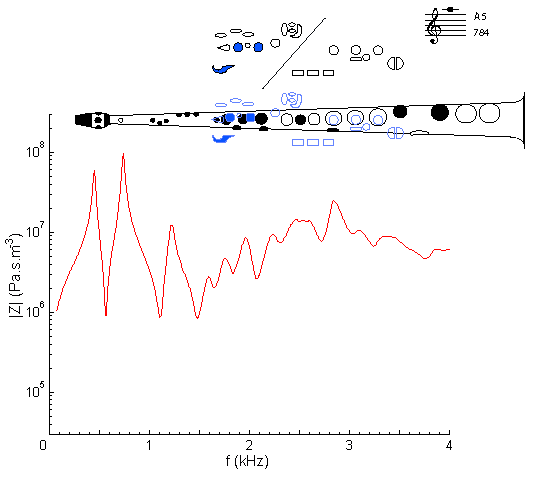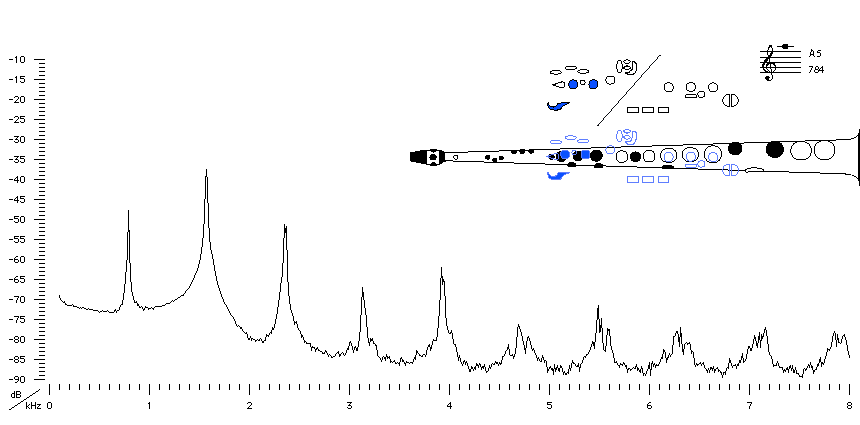| Acoustics of the saxophone |
Bb soprano saxophone |
A5 |

|
Fingering Acoustic schematic Non-specialist introduction
to acoustic impedance Notes are the written pitch. |
At frequencies below about 1 kHz, this curve looks rather like that for G5 and G#5, but raised in frequency. At higher frequencies, however, the situation is complicated by the cut-off frequency. Here, the 1 kHz cutoff weakens the third peak. The first peak is weakened, and mistuned in comparison with that for A4, by the open register hole (operated by the octave key). This is the lowest note to use the second register hole (near the mouthpiece). The saxophone has an automatic octave key.
Compare with the impedance spectrum for a tenor sax on written A5: same fingering but sounding one octave lower.

Sound spectrum
of a Bb soprano saxophone
played using fingering for A5.
For more explanation, see
Introduction to saxophone acoustics.
|
Contact:
Joe Wolfe
/ J.Wolfe@unsw.edu.au |